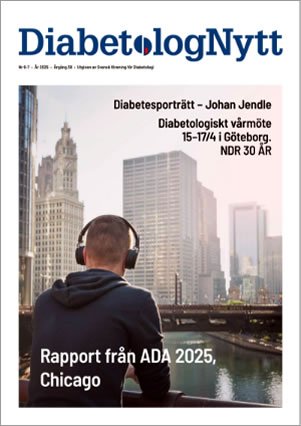May 25, 2012 (Philadelphia, Pennsylvania) — Almost half of nonobese adult with poorly controlled diabetes have latent autoimmune diabetes that has been misdiagnosed as type 2 diabetes, according to a study presented here at the American Association of Clinical Endocrinologists 21st Annual Meeting and Clinical Congress.
”Young, nonobese, adult-onset diabetic patients with a negative family history, a rapid deterioration of glycemic control, and a rapid onset of complications should be screened for autoantibodies,” said Ankit Shrivastav, MD, from the Institute of Postgraduate Medical Education and Research in Kolkata, India.
Results from the first 100 patients in the ongoing prospective observational study found a 48% rate of latent autoimmune diabetes in adults (LADA), Dr. Shrivastav reported during the Young Investigator Oral Presentation Competition.
The results are ”sobering,” said Michael Gonzalez-Campoy, MD, PhD, who was one of the judges of the competition. Dr. Gonzalez-Campoy is medical director and chief executive officer of the Minnesota Center for Obesity, Metabolism, and Endocrinology in Saint Paul, Minnesota, and clinical assistant professor of medicine at the University of Minnesota.
All subjects (mean age, 33.2 years) had adult-onset diabetes (diagnosed at 20 years of age or later), an average disease duration of 6 years, a mean body mass index (BMI) of 18.2 kg/m², and an average glycated hemoglobin (HbA1c) level of 9.6% with optimal dosing on oral insulin secretagogues (sulfonylureas), he said.
Antiglutamic acid decarboxylase (GAD) and islet cell autoantigen 512 (ICA512) antibody testing was performed for all patients. GAD positivity was found in 45 patients and ICA512 positivity was found in 7 (4 of whom were also GAD-positive).
The 2 strongest factors associated with LADA positivity were disease duration and family history of diabetes, he said.
Specifically, LADA positivity was associated with a significantly shorter duration of disease (3.2 vs 7.6 years; P < .001) and with a negative family history of diabetes. Only 16% of patients with LADA had a family history of diabetes, compared with 84% of non-LADA patients (P < .001).
Other factors less strongly associated with LADA were younger age (31 vs 34 years; P = .02), lower BMI (17.4 vs 19.1 kg/m²; P = .01), higher HbA1c (10.2% vs 9.1%; P = .02), and diabetic complications (80.0% vs 34.5%; P = .01).
The findings are ”a challenge for us to be more thorough and to make fewer assumptions,” said Dr. Gonzalez-Campoy when asked by Medscape Medical News to comment on the study.
”We need to be rigorous about defining whether someone has autoimmune diabetes or not, regardless of age. We have very elderly individuals who have type 1 diabetes and we have very young individuals who have type 2 diabetes; the only way to know is to test,” said Dr. Gonzalez-Campoy.
Although autoantibody testing for all diabetic patients is unrealistic, ”a reasonable and cost-effective approach is to identify patients who have low insulin levels, and then do autoimmune testing on those individuals, regardless of age,” he said.
”I think there are a lot of individuals who have type 1 diabetes who are not diagnosed in a timely manner because of the old way of thinking — that type 1 diabetes is a disease of the young and type 2 diabetes is a disease of the old.”
Making a timely diagnosis of type 1 diabetes and avoiding a misdiagnosis of type 2 diabetes can have important long-term implications for patients, he explained.
”In the future, we might have disease-modifying interventions for type 1 diabetes, so the earlier we can identify these individuals, the better. More important, they need to be on insulin sooner rather than later. Adding 1 or 2 or 3 medications is not going to significantly improve their glycemic control in the absence of their ability to produce insulin in their own pancreas. These are individuals who need insulin right off the bat.”
There might be patient barriers to this diagnosis in particular ethnic groups, noted Dr. Shrivastav.
”Indian diabetic patients are classically highly needle-phobic and highly reluctant to use insulin, so we have a large group of patients on oral antidiabetic medications — many of them on triple or quadruple therapies.”
Dr. Shrivastav and Dr. Gonzalez-Campoy have disclosed no relevant financial relationships.
American Association of Clinical Endocrinologists (AACE) 21st Annual Meeting and Clinical Congress: Abstract 209. Presented May 24, 2012.
From Diabetes Pro SmartBrief/ADA
Nyhetsinfo
www red DiabetologNytt

